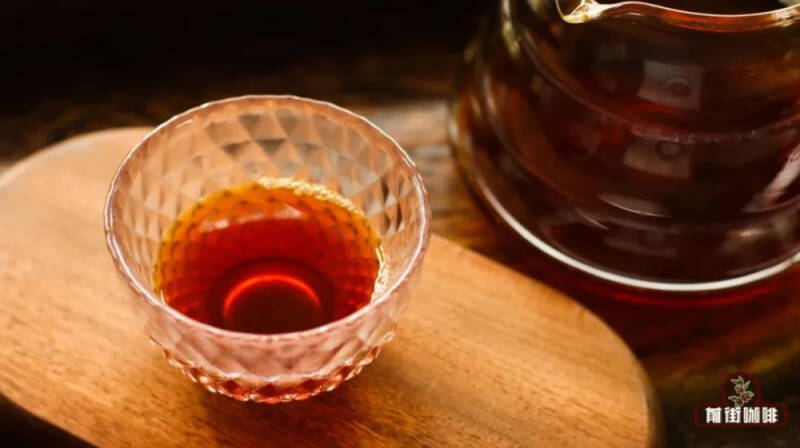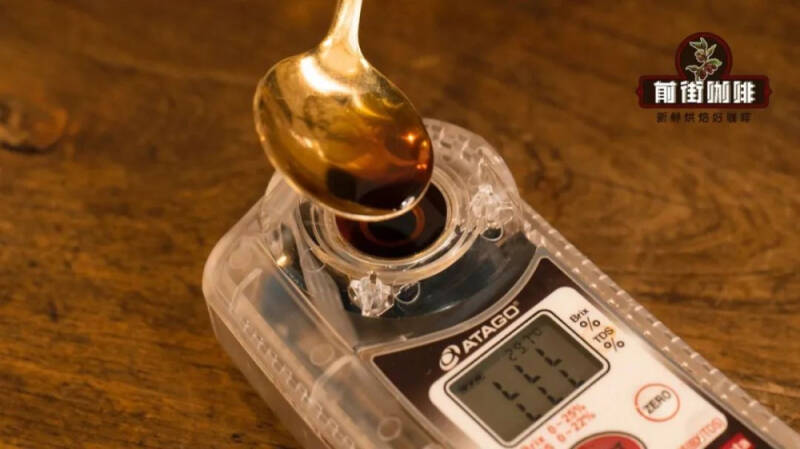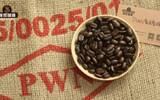Popular knowledge of hand-flushing theory: What factors can cause over-extraction and under-extraction of coffee?
When it comes to making coffee, everyone should have the same goal, that is, how to make it taste good. Although people have different definitions of good, as long as we roughly ensure that it is neither extracted nor obviously underextracted, then we naturally know that it is a good cup of coffee. For this reason, for friends who want to improve their brewing ability, it is particularly important to learn to distinguish the extraction of coffee with examples.
So today we will not talk about brewing techniques, but for each link, we will talk about the characteristics of extracted and underextracted coffee.

Friends who specialize in the theoretical knowledge of coffee should know that mainstream studies have proposed that coffee with an extraction rate of 180.22% is considered a reasonable extraction range, and less than 18% is considered inadequate extraction, while an extraction rate of more than 22% is defined as over-extraction, which is the golden cup criterion mentioned in many articles.

But making coffee is a daily thing after all, not to mention ordinary enthusiasts, even experienced baristas with many years of brewing experience will not always pull out a laboratory instrument to measure the concentration, and then seriously calculate the extraction rate of each cup of coffee.
Through a series of experiments, Qianjie found that coffee with extraction rate just within the range of gold cup will also produce unpleasant flavor, while some coffee with extraction rate more than 22% can still taste good. This is mainly related to the differences in flavor substances and dissolution of beans, which will involve a lot of details.
There are many factors that affect the extraction of substances in a pot of coffee, such as the hardness of beans, the depth of baking, the time of raising beans, the degree of grinding, the water temperature, the ratio of powder to water, the structure of the filter cup, the method of stirring and so on. In the view of Qianjie, making coffee should be a matter of improvisation, not something that needs to be drilled, so instead of relying on instrument measurements every time, and then calculating a lot of data, it is better to learn to combine the actual situation and judge whether your coffee is over or not by the taste index.
In general, the dissolution order of flavor substances has a certain rule, the light substances related to acid will dissolve first, then the sweet molecules, then the bitter components with the largest molecular weight, so the dissolution time is slow.
When most of the particles are in a state of insufficient extraction, it means that only a small number of flavor substances are brought out by water, when the acidity of the front section will prevail, and the ingredients responsible for providing sweetness and alcohol thickness have not yet been released, but the extraction has been stopped. so the coffee is first of all light aroma, the tongue can not grasp any obvious flavor, fruit acid type light roasted coffee will generally show abrupt astringency and acidity. The taste is relatively thin and has no aftertaste. Deep-roasted coffee is due to the lack of the most essential part (mellow, caramel, back sweet, etc.), and appears heavy water, lack of hierarchical sense.
If you also taste the salty taste in the coffee, it may also be a sign of insufficient extraction. Under normal circumstances, we have little chance to taste salty in coffee because it will be masked by sour, sweet and bitter, but underextracted coffee will be exposed due to the lack of sweet substances. However, compared with other flavors, salty taste is very low in coffee, so it is often ignored by the taste buds.
There are many reasons for insufficient extraction, usually because the grinding degree is too rough, the water temperature is too low, the cooking time is too short, or the amount of water injection is insufficient.
For example, Qianjie once met a guest who said that she bought our Colombian claw and extracted it according to our suggestion, but the coffee was extremely sour and had no rhyme at all. When she learned about it, she knew that she usually had the habit of intercepting the river, removing the filter cup every time the coffee liquid was not dry, which first caused the powder to be out of line, and the coffee also showed a sharp sense of acidity because of the lack of the end.
Another kind of extraction state is a situation that we encounter more often when we operate at home-over-extraction, that is, hot water brings out too much stuff in the coffee, which is mainly concentrated in the macromolecular substances released in the latter part. they are mostly characterized by bitterness, dryness, jumble, wood, straw and other exciting characteristics, so they are more easily perceived by people. The reason for this kind of flavor is that too much fine powder causes the coffee to soak for too long or the water temperature is too high. The specific solution can refer to the past article in front of the street, "the coffee is too bad?" To help you solve all kinds of problems.
In addition, some friends reported that the coffee they made had no negative taste, but it didn't taste good, all kinds of flavors were not obvious, and tended to be low, and there was a bitter rhyme in the throat when swallowing.
If you've ever had this problem, it's probably because the coffee is too strong, or maybe the extraction rate is unexpectedly high, but it's not "over-extracted", so we can add 10~20ml bypass water to the pot and try to save the high concentration by diluting it.
-END-
Important Notice :
前街咖啡 FrontStreet Coffee has moved to new addredd:
FrontStreet Coffee Address: 315,Donghua East Road,GuangZhou
Tel:020 38364473
- Prev

What is the Chaka batch of Ethiopia's Guixia Village Estate?
Ethiopia is recognized as the birthplace of coffee, and coffee has also become the country's main source of foreign exchange earnings. More than 4 million farmers produce coffee in Ethiopia, with forest coffee and garden coffee (pastoral coffee) as the main planting models, and only about 10% are coffee farms. When it comes to Ethiopia's coffee farms, the best known
- Next

What specific steps are required for the Indonesian wet planing method? Why does golden mantinin have a special herbal flavor?
As the most deeply baked item among Qianjie Bean List, Mantelin coffee has a rich baking aroma, solid and mellow taste, and low acidity. When deeply baked, we can not only experience its long bitterness, but also Enjoy its elegant sweetness, and feel its unique stuffy aroma through smell and taste.
Related
- Being chased out of the rain in front of Starbucks?! Store: Sheltering from rain under umbrellas poses a safety hazard
- The white moonlight has changed?! Lucky launches "Big Winter Pear American"
- Hand-brewed coffee three-stage method, high-sweet and universal brewing method to share! What does the high sweet water level of hand-brewed coffee mean?
- What is the difference between raw, refined and full espresso coffee? How to extract espresso and taste good?
- A complete list of coffee bean names and their meanings! What is Yejia Shefi coffee? Where is Mantelin coffee?
- What grade does Arida Manor Kaduai coffee beans belong to? What treatment is Arida ASD slow anaerobic sun exposure?
- The milk tea cup becomes smaller?! Overlord Tea Girl launches a new "Return to Yunnan" series
- Accused of selling counterfeit and high-priced coffee beans! Well-known boutique coffee brand "Oukelao" bowed and apologized!
- How to make espresso dumplings? Can I eat coffee and glutinous rice balls together?
- Save the unformed and stagnant powder cakes in one second! What is the problem with stagnant water in the powder bowl of the espresso machine?

